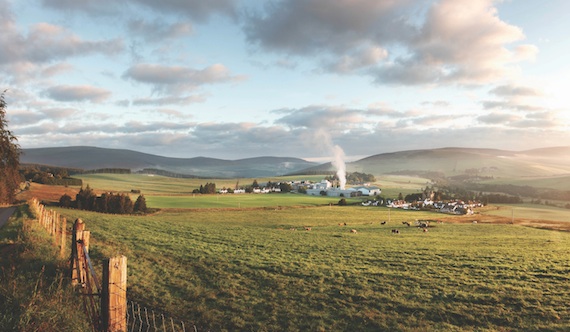________________________________________
ON ALMOST EVERY ‘whisky map’ of Scotland there is a small area in the north east which boasts such a concentration of distilleries that it is marked with an inset square and treated in detail away from the main cartography. This area is officially designated as the Speyside malt whisky-producing region, centred on the towns and villages of Elgin, Rothes, Keith and Dufftown, and including the famous distilling centre of Glenlivet.
No fewer than 51 of the 110 malt distilleries active in 2015 were within the Speyside region, which also boasts seven of the top 10 global best-selling single malts and more than 60% of Scotland’s total malt whisky capacity. One might imagine that such a concentration of distilling activity, product popularity and general esteem would give the appellation a cohesion and clear identity, but opinion is divided as to whether this is, in fact, the case.
DIVERSITY
The Hebridean ‘whisky island’ of Islay is home to eight distilleries, yet the Islay ‘brand’ is itself very strong, conjuring up stylistic images in the minds of consumers. Arguably Speyside does not do the same, perhaps partly because of the sheer number of distilleries and the variety of single malt styles. The light-bodied aperitif Glen Grant The Major’s Reserve has little in common with the sherry monster that is Aberlour A’bunadh, for example.
One man with clear views about Speyside identity is Brian Robinson, now distillery host at the region’s most recently established craft distillery, Ballindalloch, and previously visitor centre team leader at one of the area’s largest and most frequently-visited distilleries – namely Glenfiddich.
“Compared to Islay, Speyside has a far greater concentration of distilleries, yet a much lower concentration of identity,” says Robinson. “In the early days of single malts the world’s biggest brands were coming from Speyside, and the brands became very self-minded. There was never a sense of collectiveness to drive Speyside forward as a region. The likes of Glenlivet and Glenfiddich did what they did, and I don’t think it’s ever really changed.
“I’ve experienced very little crossover of distillers working together for the region. Some of the Islay distillers were unhappy when William Grant introduced Balvenie Islay Cask, but if an Islay distiller launched a ‘Speyside cask finish’ nobody would bat an eyelid.”
He adds: “Islay is a distillation of a region in one relatively small island, whereas topographically Speyside varies a great deal. You can be halfway up a mountain or by the coast. Speyside has become a collection of brands that just do what they do. It’s a workhorse region for the mass market of blended scotch as much as being home to quality branded single malts.”
As demand for blended scotch has grown globally during the past few years, Speyside has been at the heart of malt spirit capacity expansion. Diageo added a 17th Speyside malt distillery (out of a Scottish total of 28) to its portfolio in the shape of Roseisle, near Elgin, which opened in 2009 with a potential output of 12.5m litres per annum (mla), while rebuilding and expanding many of its other plants in the region.




